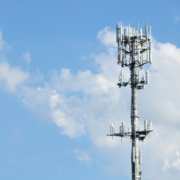The Telecom Industry Will be Calculated in Its Progression to 6G to Ensure Meaningful ROI
Approximately 250 attendees representing entities including telecom network vendors, communication service providers (CSPs), technology companies, regulators, academia, and experts from multiple nontelecom industries converged on the 2023 Brooklyn 6G Summit in late October. The event was hosted by Nokia and NYU Wireless and covered a wide range of topics relevant to 6G, including ICT industry trends, regulatory impacts, the metaverse, AI, vertical use cases, and cloud-native network infrastructure.
TBR Perspective on Telecom Industry Progression to 6G
The 2023 Brooklyn 6G Summit highlighted both the optimism and uncertainty the telecom industry is experiencing as it progresses from the 5G era, which is about halfway through its developmental cycle, to the 6G era, which is expected to commence in 2028, when the first 6G specification in 3rd Generation Partnership Project (3GPP) Release 21 is finalized.
Initial commercial 6G network deployments are expected by 2030. The sentiments of optimism and uncertainty around 6G were discussed throughout the event, including in a keynote from AT&T’s EVP of Technology Chris Sambar in which he expressed concerns regarding the ROI of 6G.
Sambar stated, “We’re getting a little bit worn out with the economics of the industry” to summarize the challenges AT&T and other operators are currently experiencing in light of high investment costs and limited monetization opportunities in the 5G era. Sambar also remarked, “To be completely honest and transparent, the industry has questions on what is 6G going to bring us, what are the use cases that customers want from 6G and frankly, what is it going to cost us.”
Sambar’s keynote, which was one of the initial sessions at the 6G Summit, set the tone for the rest of the event as speakers candidly assessed the current state of the 5G market while discussing the benefits and use cases that are expected to materialize during the 6G era. Though 6G technical specifications and expected use cases are still in the developmental stages, TBR believes operators will be more calculated and tactical in investing in 6G compared to 5G, with a deeper emphasis on ensuring a clear line of sight to ROI before significant spending occurs.
Impact and Opportunities
Lessons Learned From 5G Era Provide Blueprint to Optimize 6G Deployments
Speakers discussed missteps during the 5G era and the importance of not repeating those mistakes in deploying 6G. A key theme was that the launch of multiple variants of 5G in the U.S. — described as “50 shades of 5G” by an event participant — was ultimately a misstep that was impacted by premature marketing. This trend was exemplified by the initial launch of 5G services in the U.S. over low-band spectrum providing only marginal performance benefits compared to LTE, which in turn created a generally tepid initial impression of 5G from consumers.
Another notable example was the launch of 5G non-standalone (5G NSA) prior to the deployment of 5G standalone (5G SA). Though 5G NSA enabled operators to launch commercial 5G services faster, 5G NSA lacks key benefits enabled by 5G SA, including faster data speeds, enhanced security, and the ability to support network slicing and lower latency use cases. The separate launches of 5G NSA and 5G SA in turn created complexities and misunderstandings for consumers and enterprises.
Event participants noted these challenges experienced within the 5G era will help guide the industry as it creates more cohesive 6G strategies that will enable operators to optimize network spending, provide more tangible initial benefits to customers, and minimize premature marketing of services. Key focus areas for the industry in 6G development include optimizing spectrum allocations for 6G as well as establishing unified global technology standards for 6G to minimize fragmentation in the market. For instance, participants at the event noted it would be beneficial for the industry to determine during the earlier stages of standards development if 6G will be deployed on its own separate network core or existing 5G cores and for operators to adhere to one deployment model to avoid the complexities created by 5G NSA and 5G SA.
The Clearance of 6G Spectrum Will be Vital in Supporting Continued Growth in Data Traffic
Despite the early stages of 6G use cases and the uncertainties around monetization opportunities, operators will need to invest in 6G to remain competitive with each other and support escalating data traffic long-term as 6G is projected to support a 10x increase in usage on networks. The clearance of additional spectrum in the U.S. will be essential to support 6G and for the country to remain at the forefront of the global wireless market, as Sambar cited that the U.S. currently ranks No. 10 worldwide in licensed midband spectrum allocation. Key spectrum ranges Nokia expects 6G to be deployed on include the 7GHz-20GHz frequencies to support outdoor cell sites in urban markets, low-band spectrum in the 470MHz-694MHz range to maximize coverage, and sub-terahertz spectrum to provide peak data speeds in localized areas.
The National Spectrum Strategy, which was released by the Biden administration in November 2023, will help in advancing spectrum development in the U.S. The strategy identifies 2,786MHz of airwaves to study in the near term for new uses, including 5G and 6G. The strategy identifies five spectrum bands for study: 3.1GHz-3.45GHz, 5,030MHz-5,091MHz, 7,125MHz-8,400MHz, 18.1GHz-18.6GHz, and 37GHz-37.6GHz.
More Efficient Network Technologies Will be a Primary Use Case for 6G
Various potential 6G use cases were discussed at the summit, though the time frame for commercial readiness and the willingness of customers to pay for these solutions remain unknown. Many of the use cases discussed involved extended reality (XR) technologies such as AR and VR and included the metaverse and real-world simulations to provide training for users including military personnel and first responders. Use cases around autonomous vehicles, advanced robotics, drones and 8K video were also discussed.
TBR expects the most beneficial use cases for 6G will involve the provisioning of advanced technologies that will enable operators to more cost-efficiently support rising traffic on their networks. For instance, deeper implementation of artificial intelligence and machine learning technologies will enable operators to enhance self-optimizing network (SON) capabilities to realize cost efficiencies. 6G is also expected to result in deeper implementation of digital twins, which will help operators better anticipate potential outcomes to their networks and optimize their operations in areas including site management and field operations. Additionally, 6G is expected to be significantly more energy efficient compared to 5G, which will enable operators to improve cost efficiencies while helping to support corporate sustainability goals.
Conclusion
The 2023 Brooklyn 6G Summit provided an optimistic yet realistic outlook on the potential of 6G. The telecom industry is particularly concerned regarding the revenue opportunity provided by 6G given the current state of the 5G market. Despite the uncertainty of revenue-generating 6G customer use cases, investments in 6G will likely benefit operators in the long term due to the technology’s ability to support escalating traffic more cost-efficiently on their networks.



